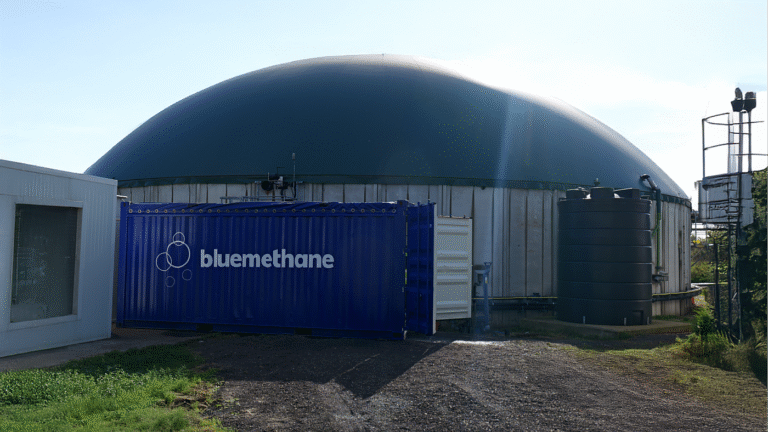
Dr. Joseph Byrum’s background spans biotech, finance, and data science. A former Monsanto and Syngenta executive, Byrum is currently CTO of Consilience AI.
The views expressed in this article are the author’s own and do not necessarily represent those of AgFunderNews.
At the intersection of quantum mechanics and agricultural science lies an emerging paradigm with profound implications for global food systems. Quantum computing—a technology leveraging the counterintuitive principles of quantum physics—promises to transcend current computational limitations in ways particularly relevant to agriculture’s most intractable challenges.
The question is not whether this technological evolution will transform agricultural practices, but rather how we can systematically harness its capabilities to address our most pressing agricultural imperatives.
The quantum advantage: beyond classical computation
To properly assess quantum computing’s agricultural applications, we must first understand its fundamental divergence from classical computing architectures. Unlike conventional bits that exist in binary states (0 or 1), quantum bits—qubits—operate according to quantum mechanical principles of superposition and entanglement.
This allows quantum systems to process exponentially more complex calculations than their classical counterparts, particularly for problems involving multidimensional optimization, complex simulations, and pattern recognition across massive datasets.
For agriculture, this computational paradigm shift is significant precisely because biological systems operate at the quantum level. The molecular interactions governing photosynthesis, protein folding, and genetic expression all exhibit quantum mechanical properties that classical computers struggle to model accurately.
Quantum computing thus offers not merely incremental improvement but potentially transformative capabilities for analyzing agricultural biological systems with unprecedented fidelity.
Genomic analysis: precision and scale
The genomic revolution in agriculture remains constrained by computational bottlenecks. While we can sequence crop genomes with increasing efficiency, extracting actionable insights from this data—particularly for polyploid crops like wheat with complex genomes—requires computational power that often exceeds current capabilities.
Quantum algorithms hold particular promise for accelerating fundamental genomic processes:
- Sequence alignment: Current dynamic programming approaches become computationally prohibitive with large datasets. Quantum pattern matching algorithms could dramatically reduce time complexity while improving accuracy, enabling more efficient identification of beneficial genetic markers.
- Genome assembly: This computationally intensive process—essentially reconstructing the complete genetic blueprint from fragmented sequences—can be reframed as a Quadratic Unconstrained Binary Optimization (QUBO) problem suitable for quantum annealing. Early research suggests this approach could significantly accelerate the assembly of complex plant genomes.
- Gene expression analysis: Quantum machine learning algorithms offer superior efficiency in processing RNA sequencing data, potentially revealing subtle patterns in how genes respond to environmental stressors—crucial information for developing climate-resilient crop varieties.
The implications extend beyond pure research. By accelerating these computational processes, quantum computing could compress breeding cycles for new crop varieties, reducing development timelines from decades to years while increasing precision in trait selection.
The economic and food security implications of such acceleration are substantial.
Proteomics: Modeling life’s machinery at the quantum level
While genomics provides the blueprint, proteins execute the essential biological functions in plants. Understanding protein structure and function represents one of computational biology’s grand challenges—and one where quantum computing’s distinct advantages become evident.
Protein folding, the process by which amino acid chains adopt their functional three-dimensional configurations, involves quantum mechanical interactions that classical computers cannot efficiently simulate. Quantum computers, designed precisely to model quantum phenomena, offer a more natural computational environment for protein structure prediction.
Perhaps most intriguing is the potential to simulate photosynthesis—the fundamental energy conversion process underpinning agriculture. Research has revealed that plants utilize quantum coherence to optimize energy transfer from photons to chemical reactions with remarkable efficiency.
By modeling these quantum processes, we might identify pathways to enhance photosynthetic efficiency—potentially the most direct route to increasing agricultural productivity while reducing resource requirements.
The economic implications are substantial: even marginal improvements in photosynthetic efficiency across major crops could translate to billions in additional agricultural output without expanding land use or resource consumption.
Agricultural data analytics: quantum-enhanced decision systems
Modern agriculture increasingly operates as a data-driven enterprise, integrating information from satellite imagery, IoT sensors, weather predictions, and market analytics. The challenge lies not in data acquisition but in processing this heterogeneous information to extract actionable insights under time constraints.
Quantum computing offers particular advantages for:
- Predictive modeling: Forecasting crop yields, disease outbreaks, or market conditions involves processing numerous variables with complex interdependencies—precisely the type of problem where quantum algorithms excel. The resulting models could enhance precision, allowing farmers to anticipate challenges before they materialize.
- Pattern recognition: Identifying subtle patterns in growing conditions or early disease signatures across terabytes of imaging data represents another quantum-amenable problem. The ability to recognize such patterns in real-time could enable preemptive interventions, reducing yield losses and resource waste.
- Resource optimization: Determining optimal allocation of water, fertilizers, and other inputs across heterogeneous landscapes with variable soil conditions, microclimates, and crop needs constitutes a complex optimization problem. Quantum annealing approaches offer potential solutions that maximize productivity while minimizing environmental impacts.
These applications would not operate in isolation but would integrate into comprehensive agricultural management systems, providing decision support across the agricultural value chain.
The competitive advantage would accrue to those who most effectively leverage this quantum- enhanced analytical capability.
Critical assessment: current limitations and future trajectory
Despite quantum computing’s theoretical promise, pragmatic assessment requires acknowledging current limitations:

These timelines suggest quantum computing in agriculture will follow a progressive adoption curve rather than a sudden disruption. The most immediate applications will likely emerge from hybrid approaches that leverage quantum processing for specific computational bottlenecks within largely classical systems.
Strategic implications for agricultural stakeholders
For agricultural enterprises, research institutions, and policymakers, quantum computing necessitates strategic positioning:
- Investment strategy: Resources should prioritize high-impact applications where quantum advantage is most significant—particularly in genomics and complex optimization problems.
- Talent development: Building interdisciplinary expertise that bridges quantum computing and agricultural science represents a critical capability gap that forward-thinking organizations must address.
- Collaborative ecosystems: Given the complexity and resource requirements, consortia approaches that distribute both costs and benefits will likely prove most effective in developing agricultural quantum applications.
- Ethical and regulatory frameworks: Proactive development of governance frameworks for quantum-enabled agricultural technologies, particularly in genomics, will be essential to maintain public trust and ensure equitable access.
Systematic transformation through quantum capability
Quantum computing’s agricultural potential extends beyond incremental efficiency gains to enabling systematic transformation of how we understand and manage biological systems. By operating at the same quantum level as the fundamental processes of life, this technology offers unprecedented insight into agricultural systems.
The economic implications are substantial but will accrue unevenly. Those who systematically develop quantum capabilities tailored to agricultural applications will possess competitive advantages in productivity, sustainability, and resilience.
This technological inflection point demands not merely awareness but strategic engagement from all agricultural stakeholders.
The question is not whether quantum computing will transform agriculture, but who will lead this transformation—and how we will ensure its benefits extend across the global food system to address our most pressing agricultural challenges.
The post Guest article: Quantum computing in agriculture… analyzing the next frontier of innovation appeared first on AgFunderNews.


